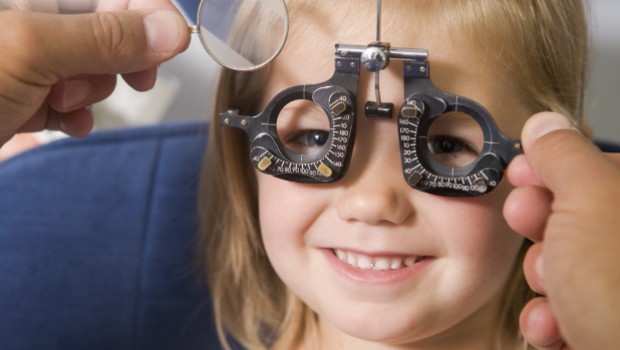Eye Care for Kids
A Clear Path to Healthy Vision
by Ronica A. O’Hara
The blurry distant vision of myopia is a worldwide epidemic. Near-sightedness has doubled in the U.S. since 1971 to 42 percent, and in some Asian countries it affects 90 percent of teens and adults, reports the American Academy of Ophthalmology. Eye doctors say the key time to pay attention is during childhood, because myopia and other eye and vision problems can be reversed or stabilized if addressed at an early age.
“Parents tend to assume that vision problems aren’t a concern for the young and healthy, but it’s never too early to promote healthful habits or to be on the lookout for potential vision issues,” advises ophthalmologist Sandy T. Feldman, M.D., medical director of the Clearview Eye & Laser Medical Center, in San Diego.
Ophthalmologists and optometrists recommend having a child’s eyes tested at 6 months, 3 years and 5 or 6 years to detect nearsightedness, farsightedness, astigmatism, “lazy eye” (amblyopia), crossed or misaligned eyes (strabismus) and other potential problems. “For signs of trouble, I ask parents if they have seen their child have an eye that wanders or if the child covers an eye regularly, they are rubbing their eyes or playing with their toys close to their face,” says optometrist Nathan Langemo, of the Hopkins Eye Clinic, in Hopkins, Minnesota.
If myopia becomes severe, it can lead to retinal detachment, premature cataracts and glaucoma in adulthood, but early detection is possible. An Ohio State University study of 4,500 children found that myopia in eighth-graders could be predicted in the first grade by their eyeglass prescription. Children at age 6 are naturally slightly farsighted, and those with normal vision are more likely to become myopic later.
A common medical treatment to slow myopia in kids is daily use of 0.01 percent atropine eye drops, the medication used to dilate an eye before an exam. It slowed down nearsightedness by roughly 50 percent in Singapore children. A new, two-year study shows that combining the eye drops with nightly contact lens-wearing is 28 to 38 percent more effective. For pre-schoolers with amblyopia, an iPad game called Dig Rush was shown to be helpful in a University of Texas Southwestern Medical Center study. Hong Kong researchers report that 15 weeks of acupuncture beat out eye patches for treating children with lazy eyes, resolving the condition in 41 percent of cases, compared to 16 percent.
The simplest preventive strategy for myopia may be simply to shoo children outdoors every day, including involving them in outdoor sports. Researchers aren’t sure whether it’s the vitamin D effect or the fact that when they are outdoors kids focus more on distant objects like trees and balls than when reading a book or screen, but recent studies in Taiwan and Denmark have verified that more time outdoors is linked to less myopia. Even sitting in sunlight inside while reading or using full-spectrum light bulbs is protective, say re-searchers. When outdoors, “Make sure the child has 100 percent UVA and UVB sun protection for the eyes,” advises Langemo, including using UV contact lenses.
Evidence is mixed on whether close-up reading brings on childhood myopia, but a study of 500 college students that heavily used computers found 53 percent reporting headaches, 55 percent with burning sensations in the eyes and 48 per-cent with tired eyes. When kids focus on a computer, their eye-refreshing blinking rate slows from 10 to 12 times a minute to three or four times a minute, says optom-etrist Marc Grossman, of New Paltz, New York, author of Natural Eye Care: Your Guide To Healthy Vision and Healing.
He recommends taking breaks at least 10 minutes every hour, using homeopathic eye drops and gently massaging the eyes by moving fingers from the inner corner, around the upper socket and underneath, stopping about six times to massage each point for five to 10 seconds.
It’s also important to remove household hazards. Medical emergency rooms increasingly report eye injuries in kids from popular toy weapons like Nerf, BB guns and paintball guns, as well as colorful detergent pods that preschoolers love to squeeze or bite, plus aerosol spray from paint, hairspray, cleaning products and bug repellants.
Feeding children the right foods, including lots of vegetables, fruits and grains, also benefits their eyes. The omega-3s in fish oil, nuts and seeds help minimize dry eye, and leafy greens and eggs have the eye-protective antioxidants lutein and zeaxanthin.
Ronica A. O’Hara is a Denver-based health writer. Connect at OHaraRonica@gmail.com.
Photo: Monkey Business Images/Shutterstock.com




























